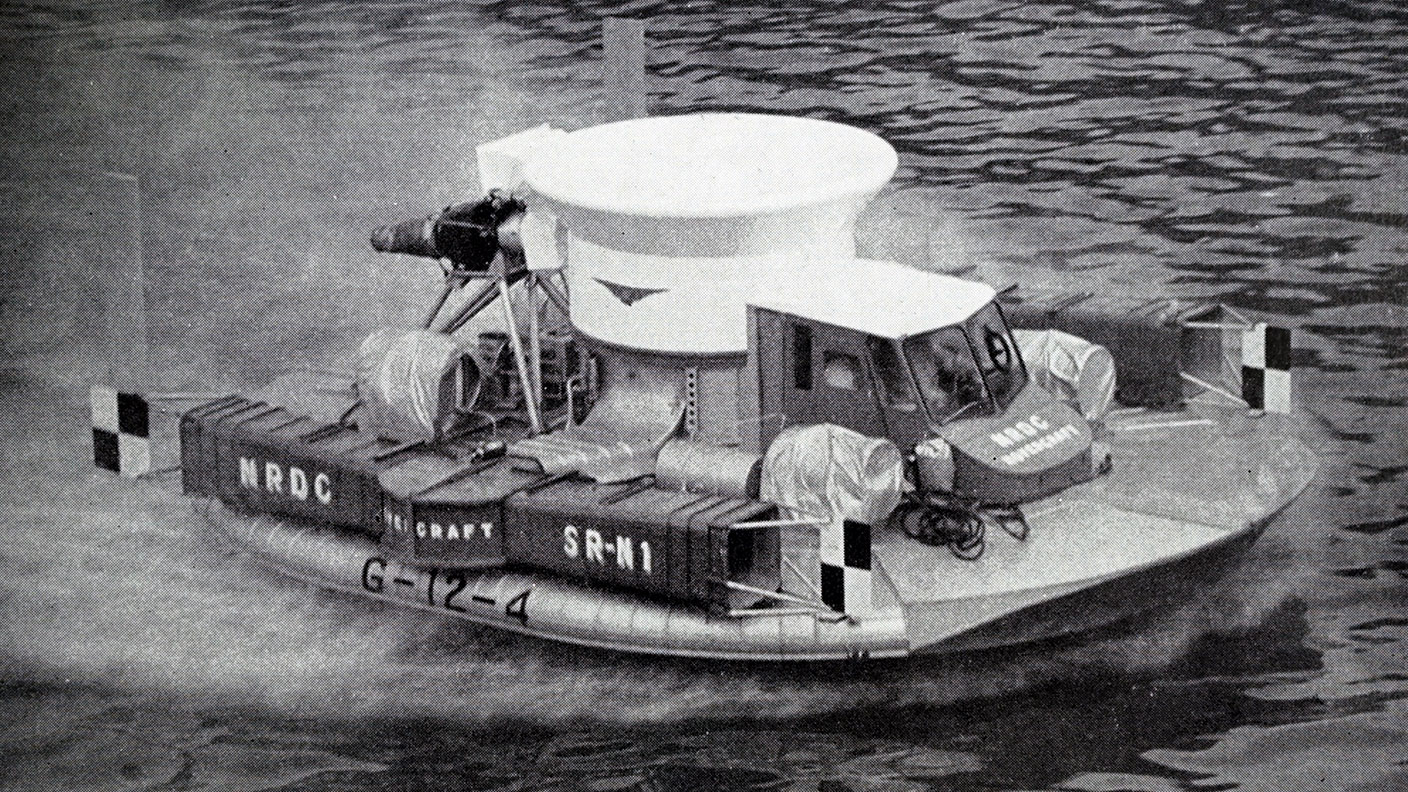11 June 1959: the hovercraft makes its debut on the Solent
The first trials of the hovercraft, developed by Saunders-Roe Ltd and called the SR-N1, took place on the Solent, on this day in 1959.


"Is it an aircraft, or is it a ship?", asked The Times correspondent who'd been given the enviable task of wandering down to the shores of the Solent on a summer's day in 1959 to report on the initial trials of the hovercraft.
He wasn't being profound – he really didn't know. In the next line of his write-up, he confesses to his readers that "the fine spray thrown up by the air cushion supporting the hull" had obscured his view, which provided him with "an unconvincing answer". What he did know, though, was that he was in the presence of a pioneering new form of transport.
The SR-N1, developed by Saunders-Roe Ltd, was powered by a single Alvis Leonides engine, which delivered 435 horsepower to a vertical fan that could take the "flying saucer" to a top speed of 25 knots. It was 24-feet wide and ten-feet tall at its centre.Hovering 15 inches above the surface, the air driven through the four-bladed axial fan could be diverted through horizontal nozzles to give the pilot direction.
MoneyWeek
Subscribe to MoneyWeek today and get your first six magazine issues absolutely FREE

Sign up to Money Morning
Don't miss the latest investment and personal finances news, market analysis, plus money-saving tips with our free twice-daily newsletter
Don't miss the latest investment and personal finances news, market analysis, plus money-saving tips with our free twice-daily newsletter
The National Research Development Corporation provided an initial funding of £150,000 with the aim of developing a larger vehicle for cross-Channel services, and eventually ginormous oceanic hovercrafts for carrying thousands of tonnes of freight at speeds of up to 120 knots.
While the latter would remain a pipe dream, the English Channel was crossed a few weeks later on 25 July 1959. It had been believed that the technology would make trips to the continent not only faster, but also more cost effective than ferries. This, however, was never the case, and in 2000, the service was stopped.
As for the SR-N1, in December 1959, Prince Philip got his hands on the controls and flew the hovercraft so fast, he put a ding in the bow. It was never repaired and forever after, it was known as the “Royal Dent”.
Get the latest financial news, insights and expert analysis from our award-winning MoneyWeek team, to help you understand what really matters when it comes to your finances.

-
 31 August 1957: the Federation of Malaya declares independence from the UK
31 August 1957: the Federation of Malaya declares independence from the UKFeatures On this day in 1957, after ten years of preparation, the Federation of Malaya became an independent nation.
-
 13 April 1960: the first satellite navigation system is launched
13 April 1960: the first satellite navigation system is launchedFeatures On this day in 1960, Nasa sent the Transit 1B satellite into orbit to provide positioning for the US Navy’s fleet of Polaris ballistic missile submarines.
-
 9 April 1838: National Gallery opens in Trafalgar Square
9 April 1838: National Gallery opens in Trafalgar SquareFeatures On this day in 1838, William Wilkins’ new National Gallery building in Trafalgar Square opened to the public.
-
3 March 1962: British Antarctic Territory is created
Features On this day in 1962, Britain formed the British Antarctic Territory administered from the Falkland Islands.
-
10 March 2000: the dotcom bubble peaks
Features Tech mania fanned by the dawning of the internet age inflated the dotcom bubble to maximum extent, on this day in 2000.
-
9 March 1776: Adam Smith publishes 'The Wealth of Nations'
Features On this day in 1776, Adam Smith, the “father of modern economics”, published his hugely influential book The Wealth of Nations.
-
 8 March 1817: the New York Stock Exchange is formed
8 March 1817: the New York Stock Exchange is formedFeatures On this day in 1817, a group of brokers moved out of a New York coffee house to form what would become the biggest stock exchange in the world.
-
7 March 1969: Queen Elizabeth II officially opens the Victoria Line
Features On this day in 1969, Queen Elizabeth II took only her second trip on the tube to officially open the underground’s newest line – the Victoria Line.

